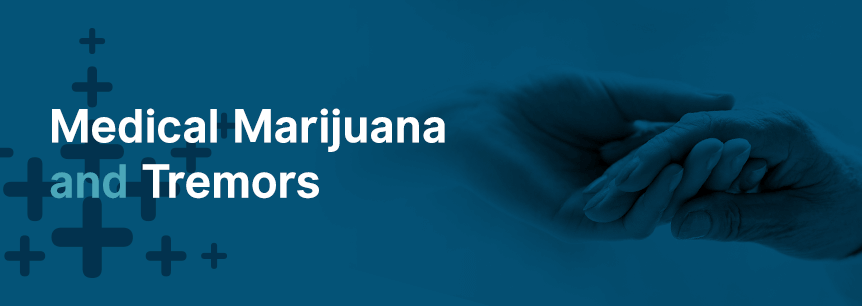
People who suffer from tremors struggle with much more than uncontrollable shaking, although that’s unpleasant in itself. They also experience other harsh symptoms, such as trouble sleeping, anxiety and depression, that can impact their quality of life. Medical cannabis for tremors can help ease some of these symptoms and provide you with the relief you need to start living the way you want and used to before having tremors.
Tremors can increase with stress and get better with treatments meant to enhance relaxation. Since medical marijuana might lead to enhanced relaxation, mitigate the stress response and cause euphoric mood, it could also decrease tremors in some people.
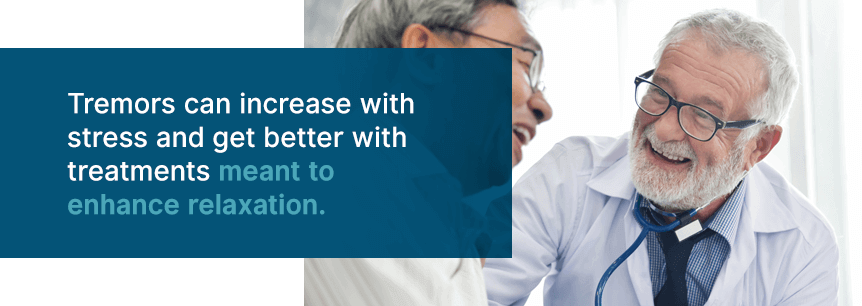
Even so, certain cannabinoids in cannabis show promise as a potential therapeutic treatment for neurologic disorders, offering another approach for treatment, particularly when standard medicines fail or cause intolerable side effects.
Find A Doctor Find A Dispensary
Medical weed has already been shown to have beneficial effects for:
Researchers are now exploring marijuana’s role in brain disease.
The growing interest for cannabis for tremors isn’t surprising since standard treatments often fall short of the desired effect. Additionally, tremors can change from one moment to another responding to many personal factors like:
This means there’s a complicated interaction between the severity of symptoms and physical or psychological well-being and an individual’s activity. Medical pot can potentially impact any of these factors.
Marijuana for tremors could be a great addition or alternative to traditional treatment of a patient suffering from movement disorders like tremors and Parkinson’s disease. Sadly, many of the standard medicines prescribed for a patient with Parkinson’s also come with substantial, negative side effects that aren’t present in cannabis. Cannabis offers a combination of antioxidant, anti-anxiety and pain relief all in one medicine.
Take note, marijuana does have some side effects, including:
Cannabis is self-reported to assist individuals with managing symptoms of:
When first starting with medical marijuana and tremors treatment, you’ll want to experiment a little to find the right strain for your symptoms. Each strain is created to target a specific symptom or set of symptoms.
For tremors and involuntary muscle movements, try Purple Wreck, Snoop Dogg OG or Shishkaberry.
To treat muscle spasms, try Head Cheese, Green Candy or Snoop Dogg.
If you have trouble sleeping, try Purple Urkle, Tahoe OG Kush or Granddaddy Purple.
To combat nausea, try Blackwater, Purple OG Kush or White Fire OG.
For depression, try Pineapple Express, Jack Herer or Harlequin.
If you experience anxiety, try Amnesia Haze, Chocolate Chunk or Harlequin.
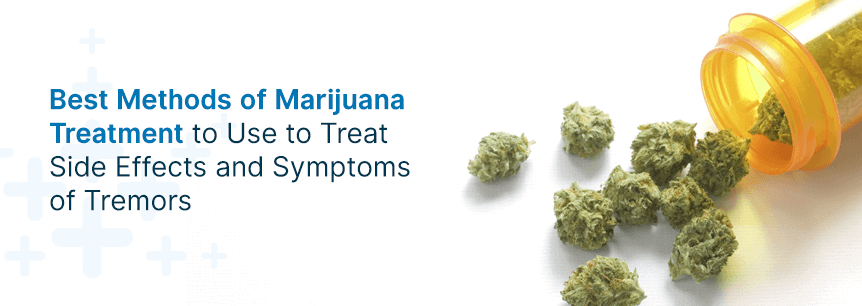
Methods of cannabis for tremors treatment goes far beyond simply smoking the herb. Many people prefer not to smoke because it causes potential harm to your lungs. Therefore, they choose other healthier choices like eating edibles, vaping, applying topicals and drinking their cannabis.
Medical weed can provide you with tremor symptom relief. You need to perform a simple search for a qualified cannabis doctor and dispensary. While dispensaries are helpful in making it easier for you to find a cannabis doctor, for your convenience, you can browse for one here on MarijuanaDoctors.com. We save you time and hassle.
When it comes to tremors, you don’t want to hesitate to find relief. Allow us to help improve your symptoms and your quality of life.
Find A Doctor Find A Dispensary
Tremors are rhythmic, involuntary muscle contractions that lead to shaking movements in one or more areas of your body. They are common and mostly affect your hands, but may also occur in your:
Tremor can occur at different times, with breaks (intermittent) or be constant. Tremor can occur on its own sporadically or as a result of another condition.
Essential tremor incidence increases with age, thereby making age a risk factor. Tremors affect middle-aged and older adults the most — the average age of onset is between 35 and 45 years old. However, it can affect anyone at any age. The condition typically affects both genders equally.
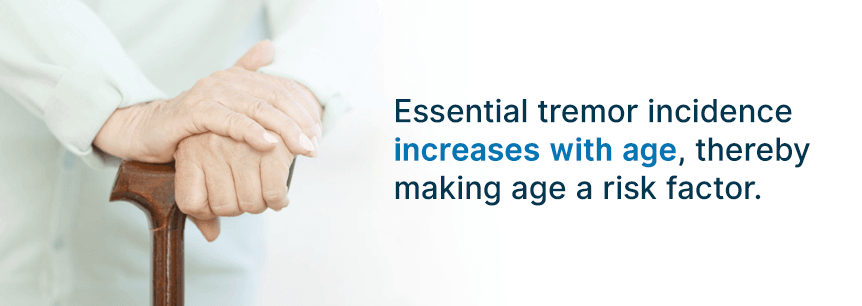
Tremors aren’t life-threatening. But, they can be embarrassing and in some cases, disabling, making it hard or sometimes impossible to perform daily life tasks and work.
The main symptoms linked with tremors include:
Tremors are classified most commonly by their cause origin and appearance. There are over 20 forms of tremors. Some common forms are:
Typically, issues in the deeper parts of your brain that control movements cause tremors. There’s no known cause for many types of tremors. However, some types do appear to run in families and are inherited.
Other diseases or factors may also cause tremors such as:
Essential tremor links with other conditions. Other movement disorders, like Parkinson’s disease, link with essential tremor. Some people have reported a link between essential tremor and migraine headaches. Others with essential tremor could also be at a higher risk of developing dementia and Alzheimer’s disease.
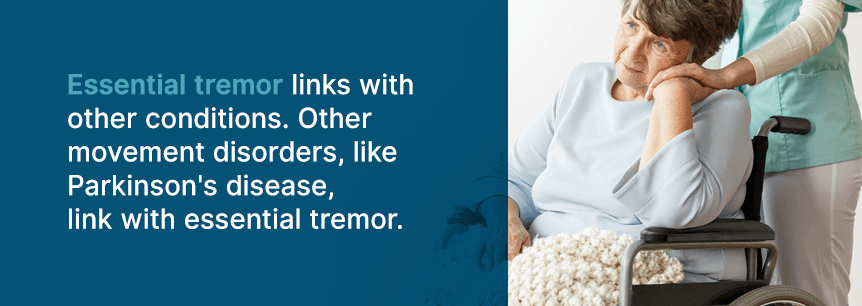
In some instances, if you’re affected by tremors, you might also develop various non-motor symptoms, including:
Medications used for treating essential tremor might also raise an individual’s risk of depression.
There’s currently no cure for most tremors. The proper treatment will depend on the underlying cause. Possible treatment options for tremors include the following:
Some tremors improve when you treat the underlying condition. For instance, with psychogenic tremor, in some cases, the tremor will disappear when you treat the patient’s underlying psychological issue.
Symptomatic drug therapy could be an option for a few types of tremor.
Side effects of anti-seizure medications, such as clonazepam, primidone, gabapentin, and topiramate may include:
Side effects of Dopamine-like drugs like pramipexole may include:
Side effects of ropinirole may include:
Your doctor may prescribe other medications, such as amantadine hydrochloride, to lessen Parkinsonian tremors.
Side effects of amantadine hydrochloride may include:
Side effects of beta-blockers, such as propranolol, include:
Side effects of Botox are:
Some people see improvements in their tremors when they make changes in certain habits and tremor triggers, such as avoiding caffeine or using alcohol sparingly.
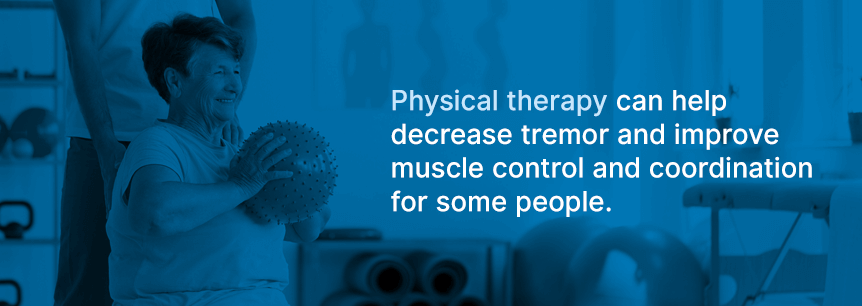
Physical therapy can help decrease tremor and improve muscle control and coordination for some people. The physical therapist will assess you for:
They may teach you how to hold your affected arm close to your body or brace your affected limb during a tremor to help gain motion control. Balancing and coordination exercises could help as well.
Some physical therapists might suggest you use things like:
A newer treatment for essential tremor uses magnetic resonance images (MRI) to transmit focused ultrasound creating a lesion in the brain’s thalamus area believed responsible for causing the tremors. Physicians only recommend individuals with essential tremor who do not respond well to beta-blockers and anticonvulsant drug have this procedure.
The most common type of surgical intervention for tremor is deep brain stimulation (DBS). The doctor uses implantable electrodes for sending high-frequency signals to your thalamus. They also use a battery-operated neurostimulator to deliver electrical stimulation to certain brain areas that control movement.
You’ll turn a pulse generator on and off using a hand-held device and a magnet that’s implanted surgically under your skin. This electrical stimulation disables the tremor temporarily, and if necessary, you can reverse it by turning off the implanted electrode. The generator’s batteries last for around five years, and the surgeon will replace them surgically. Doctors use DBS presently for treating essential tremor, Parkinsonian tremor, and dystonia.
Thalamotomy surgical intervention could help ease some tremors. A surgeon usually only performs these surgeries when the tremor is severe, and they can’t control it satisfactorily with medication.
The surgical treatment, thalamotomy, involves lesion creation in the thalamus region of your brain. It’s a highly effective treatment for people with cerebellar, essential or Parkinsonian tremor. The surgeon will perform this surgery in a hospital under local anesthesia, so you’ll be awake during the procedure.
Tremor surgery does have common side effects such as:
After the surgeon secures your head in a metal frame, they map your brain to find your thalamus.
Researchers are focusing on a couple of areas to understand tremors better and improve upon their treatment options. These include:
In recent years, clinical, pathological and neuroepidemiological studies have contributed significantly to the changing view of essential tremor. Studies recently have shown a substantial link between certain genes and the risk for essential tremor. Therefore, researchers are working toward identifying the genetic factors that make individuals more susceptible to tremors to develop new and better options for treatment.
Researchers from the National Institute of Neurological Disorders and Stroke (NINDS) are trying to identify brain functions and structures by using non-invasive neuroimaging techniques. They hope to develop specific markers that can track how these markers change as the disease progresses. Other researchers are using functional magnetic resonance imaging (fMRI) technology to learn more about diseased brain circuits.
Researchers have also been involved in more than 200 clinical trials studying tremors.